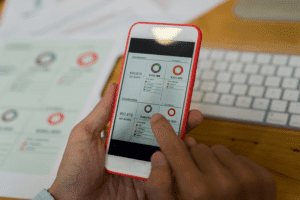
This article will guide you through the retail accounting method and hopefully help you decide if this method is right for your business. Synder provides you with the tools to manage your own accounting and helps simplify the entire retail https://www.bookstime.com/ accounting process. By automatically generating accurate P&Ls, reconciliation, and routine tasks, you have all the necessary information to make important business decisions in minutes. The final step in the accounting cycle for a retail store is balancing the books. This step is usually performed monthly and helps to reconcile your records with the actual balance on your business accounts. During reconciliation, if any discrepancies, errors, or unauthorized expenses are found, you should make the appropriate adjustments and mark them in your general ledger.
Best Small Business Accounting Software in 2024
The LIFO method assumes the most recent items entered into your inventory will be the ones to sell first. We offer a complete range of accounting and bookkeeping services including outsourced accounting to meet the needs of your business. Additionally, accounting services have a significant impact on risk management.
- On the income statement, you track revenue, or all of the money your business is earning.
- Beginning inventory refers to the inventory at the end of the previous period.
- As you can imagine, the cost of your inventory has a significant impact on your business’s profitability.
- Retailers should do due diligence and intensive research on possible service providers before choosing accounting services.
Is the retail method required?
This brings us back to inventory valuation methods, including retail accounting. Retailers may guarantee long-term financial stability, save operating expenses, and get a competitive advantage by doing this. In the dynamic realm of retail, maintaining financial discipline may provide significant benefits.
What Is Retail Accounting? A Guide to the Retail Method of Accounting
The retail inventory method should only be used when there is a clear relationship between the price at which merchandise is purchased from a wholesaler and the price at which it is sold to customers. The weighted average cost flow assumption is the least common approach to tracking inventory. In fact, the IRS considered it inaccurate and prohibited businesses from using it for tax purposes until 2008. In other words, retail accounting is a way of tracking inventory costs that is especially simplified compared to the other available methods. More specifically, in retail accounting, you’ve got to value all of your inventory at retail value and then subtract your sales to estimate your remaining inventory.

Inventory Management: Optimizing Your Stock for Success

Let’s also say you have a 30% markup on all items and you know that your inventory was valued at $100,000 last quarter. Doing so can save you time at the end of the year when you’re preparing tax statements, and it helps you keep track of your revenue and profits. Some alternatives to retail accounting include financial accounting, which analyzes all company transactions in financial statements.

What is the FIFO accounting method?
For example, in your income statement, you might have listed an invoice in your sales, but your client might have 30 days to pay the invoice. Keeping accurate records of your cash flow with this financial statement is vital to keeping your company afloat. Depending on the type of inventory you sell, you may be able to use the simpler retail method to calculate the cost of goods sold and the cost of your ending inventory. Take this number and subtract the sales total multiplied by the percentage, and subtract it from the cost of goods sold to get the ending inventory total. If retailers sell 50 pens that were initially purchased for $5, and then another 50 pens are purchased for $7.50, the LIFO method would assign a value of $7.50 to the original items sold. This retail accounting strategy will be the best option for start-up organizations, offering a new approach to inventory management and cost estimation.

- Following the FIFO method, you’ll take 30 and multiply it by 0.05 and add that to 20 multiplied by 0.07.
- You should track information like customer names, amounts, discounts, products sold, taxes, payment methods, and subscription details if relevant.
- You should do a manual inventory count at least once a year to keep your records in order, though it may be wise to count monthly and adjust your records accordingly.
- Here are some best practices you should follow to make your accounting system more efficient and effective.
- One of the main responsibilities of retail accounting services is maintaining accurate financial records.
- Financial accounting involves the reporting, analyzing and outlining all of a company’s transactions (daily, weekly and monthly) in financial statements.
As we discussed earlier, the retail method of accounting shouldn’t be viewed as its own discipline. However, it’s handy to compare it to commonly used forms of accounting. These tend to be used in conjunction with one another because they each provide a different approach to categorizing financial information. The retail method can also help you keep account of the goods you’re buying or selling, know how much is left over, and maintain the right amount of inventory at all times. Variances in inventory or sales volumes from these methods may be deductible, providing potential tax benefits. If you sell online using PayPal, Stripe, or Square, you might not need a separate POS.

Disadvantages of retail accounting
Because there’s no guarantee you’ll be able to change your accounting methods later, you must choose them carefully the first retail accounting time. Even offering discounts on certain products would throw off your calculations. Many retail stores use these as effective marketing tactics and to incentivize customer behaviors like buying in bulk or paying on time. Finally, you have what you need to calculate the cost of your ending inventory without taking a physical count. It equals the cost of your beginning inventory plus the cost of your purchases minus your cost of goods sold.
What’s the difference between retail vs. cost accounting
- Depending on the type of inventory you sell, you may be able to use the simpler retail method to calculate the cost of goods sold and the cost of your ending inventory.
- I will make every effort to exceed your expectations in all services provided.
- Three essential elements of a successful retail company are accurate financial records, regulatory compliance, and efficient financial analysis.
- However, cost accounting can be challenging because it involves many factors that store owners can’t control.
- The periodic method of tracking your inventory can be less convenient and more labor-intensive, but it might be preferable if your company can’t afford a fully capable POS system.
Retail accounting software can provide a comprehensive retained earnings balance sheet account inventory at the item’s retail price in order to detect losses, damages and theft of stock. This helps business owners to track the cost of sales (COS), also known as Cost of Goods Sold (COGS). First-in, first-out is a method used to count ending inventory costs that focus on cost flow.
Betty Wainstock
Sócia-diretora da Ideia Consumer Insights. Pós-doutorado em Comunicação e Cultura pela UFRJ, PHD em Psicologia pela PUC. Temas: Tecnologias, Comunicação e Subjetividade. Graduada em Psicologia pela UFRJ. Especializada em Planejamento de Estudos de Mercado e Geração de Insights de Comunicação.

